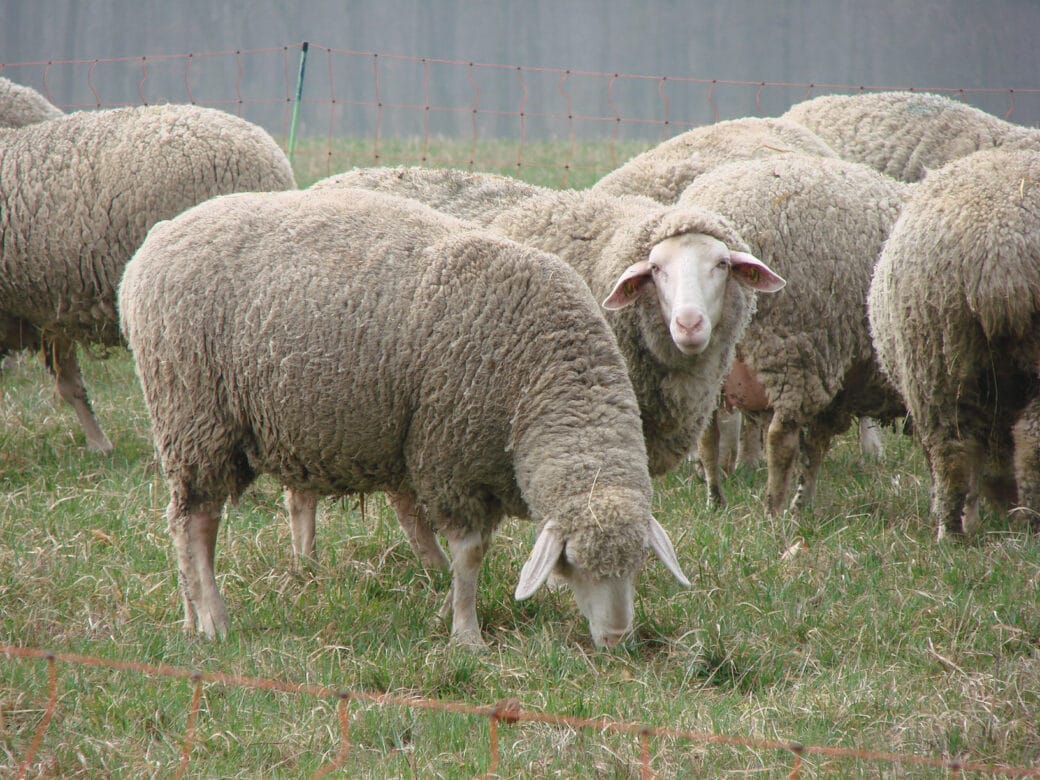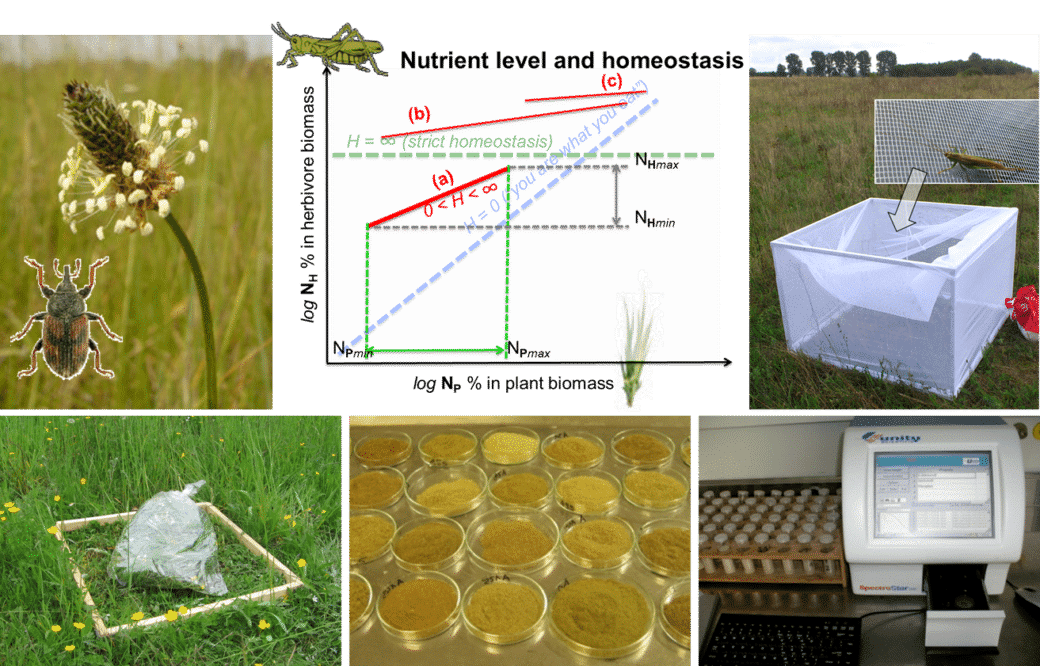Land-use effects on plant-herbivore stoichiometry: micro- and macronutrients

Plant regulation of soil nutrients/elements
- Element concentrations in plant biomass respond differently to respective availability in soil and consequently the stoichiometric mismatch is also strongly element-dependent
- Stoichiometric variability among single species is higher in plots characterized by high species richness, low productivity and low management intensity
- Different macronutrients and fibre contents in community biomass reveal distinct levels of interannual variation; Species rich grasslands are expected to be stoichiometrically more stable compared to species poor ones
Herbivore regulation of plant nutrients/elements
- Herbivore species differ in three traits: (1) their degree of homeostasis, (2) mean nutrient concentration in their body mass, i.e. the mismatch with their host plants, and (3) range of concentrations in their resources utilized successfully
- These three non-independent traits are positively correlated across species, and each of these traits may limit the distribution of herbivores along the land use (fertilization) gradient
- These effects contribute to community composition and diversity of herbivores, e.g. species with low nutrient requirements or high homeostasis predominate at sites with low fertility and vice versa
STOICHIO focusses on the quantitative and qualitative evaluation of nutrients, their regulation within and the transfer between species and their environment (Ecological stoichiometry). This project aims at understanding regulatory mechanisms of stoichiometry from soil to vegetation and whole herbivore communities along the land use gradient in the grasslands of the Biodiversity Exploratories. Beside classic elements considered in stoichiometric research (C, N, P, K), we will particularly include micronutrients and trace elements.
Nutritional stoichiometry is element and species specific. Whereas some elements in consumers vary proportionally to their respective source, others are regulated to a constant level or present a certain source-independent variability. Taxa, species and even individuals have different nutrient requirements and are able to regulate their internal nutritional levels according to their needs. Whereas some maintain quite constant levels independent of nutrient availability (stoichiometric homeostasis), others present with a certain plasticity in internal nutrient levels (stoichiometric plasticity) according to availability. However, the regulating processes of nutritional stoichiometry on an individual level up to the community of consumers are still very poorly understood. Changes in nutrient availability in the resource (e.g. due to agricultural management) affect species richness, community composition and grassland productivity. It is not known, nevertheless, whether and how these aspects are affected by interspecific variation in nutritional homeostasis and quantitative requirements of species.
In order to better comprehend species distribution patterns, biodiversity and ecosystem dynamics, it is important to understand the mechanisms behind species’ limitation by nutrients and their regulation. We aim to clarify if the distributional range of plant and herbivore communities along a gradient of resource stoichiometry is constrained or influenced by the level of homeostasis or plasticity of species and how this stoichiometric variation contributes to performance and hierarchy of species in communities; and how species respond stoichiometrically to fertilization and change in overall community composition with land use.
- Field surveys for plant and herbivore species in all 150 EPs
- feeding trials in the exploratories with plant material from the plots (VIPs) and more controlled feeding trials in the laboratory
- elemental analyses of plant and herbivore biomass by means of Near Infrared Reflectance Spectroscopy (NIRS), Inductively Coupled Plasma Optical Emission Spectroscopy (ICP-OES) and Fluorescence X-Ray Spectroscopy (FXS)
- amino acid analyses in herbivores










